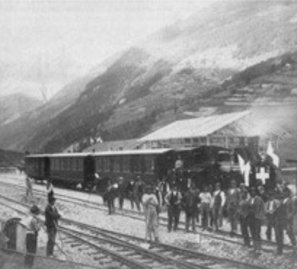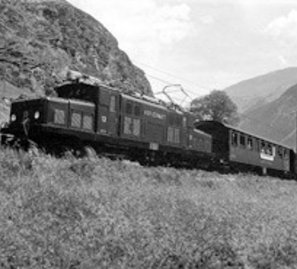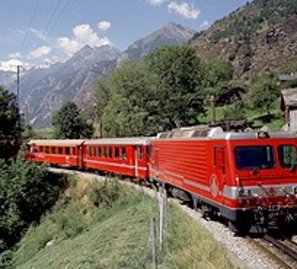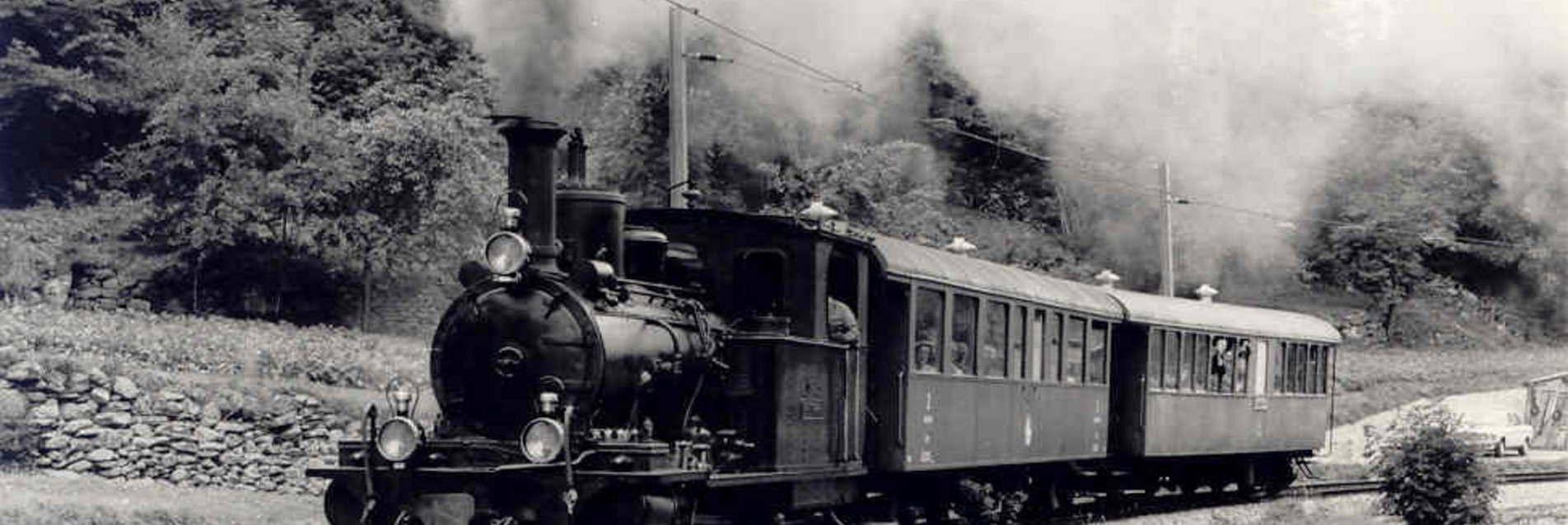125 years of momentous history
The history of the BVZ Zermatt-Bahn (BVZ), which began near the end of the 19th century, was capped in 2003 with its merger with the Furka Oberalp Bahn to become the Matterhorn Gotthard Bahn. The railway originally came into being thanks to the fascinating appeal of the Matterhorn. After the first ascent was achieved by British climber Eduard Whymper in 1865, the 4478-metre-high mountain and the entire region enjoyed ever-increasing popularity. Zer-matt, however, was still only accessible by foot in those days and the demand for a railway line into the Matterhorn village was therefore great.

Only a summer operation initially
This led to the start of construction in 1888 of the metre gauge railway Visp-Zermatt-Bahn – which was the name of the BVZ Zermatt-Bahn at the time. Three years later, on 18 July 1891, the en-tire 44-km-long route from Visp to Zermatt was opened. However, due to the risk of avalanches and the fact that tourism was still limited to the summer, the narrow gauge railway operated ini-tially from June to September only. Just a few years after operations began, the number of pas-sengers had already significantly exceeded ex-pectations. This positive development for the railway was due in large part to the opening of the Gornergrat Railway in 1898 along with the Sim-plon Tunnel (1906) and the Lötschbergbahn (1913). Unfortunately, this growth was halted ab-ruptly by the outbreak of World War I. The com-bination of a drastic decline in tourist numbers and a rise in coal prices caused problems for the railway and led to heavy financial losses. It was not until 1927 that passenger volumes regained their pre-war levels.
Electrification and year-round service
The Visp-Zermatt-Bahn was always focused on offering its passengers the highest comfort possi-ble. As a result, it replaced its steam locomotives with electric engines in 1929, and the long-awaited section of track from Visp to Brig was finally opened on 6 June 1930. However, it was only in June 1962 that the name was changed to the Brig-Visp-Zermatt-Bahn. Thanks to the new section of track, the route from Zermatt to St. Moritz with the Visp-Zermatt-Bahn, the Furka Oberalp Bahn and the Rhaetian Railway was now passable all year, and thus the largest Swiss nar-row gauge railway network was formed. Efforts and attempts by the BVZ to maintain rail service to Zermatt during the winter as well had been un-derway for a long time. However, this goal was only achieved in 1933 because of the weather conditions and lack of avalanche protection structures. The effects were felt immediately, as Zer-matt began to expand its range of tourism ser-vices on an ongoing basis.

Electrification and year-round service
The Visp-Zermatt-Bahn was always focused on offering its passengers the highest comfort possi-ble. As a result, it replaced its steam locomotives with electric engines in 1929, and the longawaited section of track from Visp to Brig was finally opened on 6 June 1930. However, it was only in June 1962 that the name was changed to the Brig-Visp-Zermatt-Bahn. Thanks to the new section of track, the route from Zermatt to St. Moritz with the Visp-Zermatt-Bahn, the Furka Oberalp Bahn and the Rhaetian Railway was now passable all year, and thus the largest Swiss narrow gauge railway network was formed. Efforts and attempts by the BVZ to maintain rail service to Zermatt during the winter as well had been underway for a long time. However, this goal was only achieved in 1933 because of the weather conditions and lack of avalanche protection structures. The effects were felt immediately, as Zer-matt began to expand its range of tourism ser-vices on an ongoing basis.
Modernisation after the Second World War
As in 1914 to 1918, passenger numbers on the Visp-Zermatt Railway plummeted during the Second World War - at least as far as foreign tourists were concerned. Thanks to having Swiss passengers and regular military transports, the railway was able to continue its operations. The rising price of coal no longer affected the railway, which had been operated electrically since 1929. In the decades after the Second World War, BVZ continuously modernised its rolling stock and infrastructure. The passenger coaches were renewed, almost all the bridges on the line were replaced by reinforced concrete structures, avalanche protection structures were extended and a line-block system was used to increase safety. In 1972, the railway responded to the increasing number of passengers by introducing a regular shuttle service between Täsch and Zermatt. In 2006, BVZ Holding was able to open the Matterhorn Terminal Täsch - a modern, transfer station for visitors to Zermatt who arrive by car.
100 years of BVZ amid stormy weather
The year 1991 should have been a happy one for the Brig-Visp-Zermatt Railway, as it was celebrating its centenary. Instead, several rockfalls occurred that year, not injuring anyone, but doing damage to large parts of the railway line. In the rockfall of 18. April 1991, huge boulders fell onto the tracks northwest of Randa, so that traffic had to be diverted to the road. Three weeks later, the mountain slid again and dammed the Vispa river. The lower part of the village of Randa was flooded, and after heavy rainfall, the railway station was also under water in mid-June. An almost three-kilometre-long section of the BVZ route was put into operation at a new location on 1. August, but was also flooded shortly afterwards. Finally, on 10. August, railway operations could be resumed on a regular basis. The anniversary celebrations planned for July 1991 had to be postponed until the autumn. The total damage to BVZ amounted to several million Swiss francs.

The name of the railway was also changed once again in 1991 – it then became known as the BVZ Zermatt-Bahn. On 28 June 1999, the sharehold-ers of the railway finally agreed to the conversion of the company into BVZ Holding AG. This was a key preliminary decision for the eventual merger with the Furka Oberalp Bahn (as it was known at the time) to become the Matterhorn Gotthard Bahn in January 2003.





